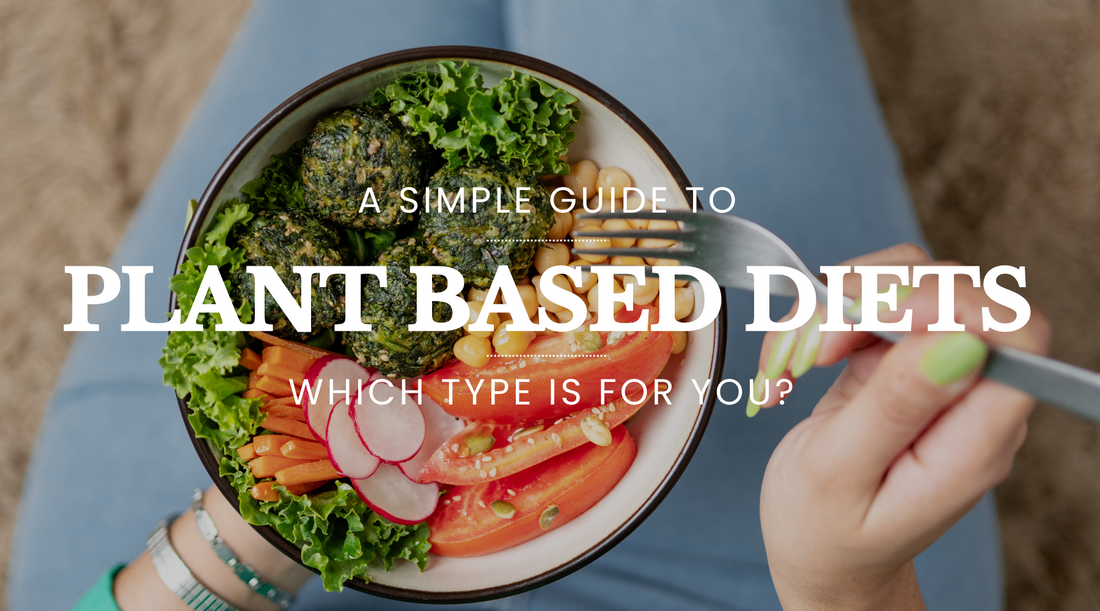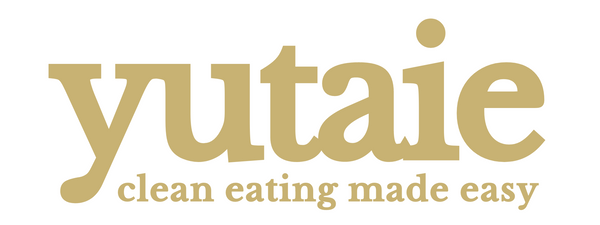
A Simple Guide to the Different Types of Plant-Based Diets
Share
Plant-based diets is increasingly gaining popularity, offering a fresh, vibrant way to eat that’s better for your health, the planet, and often animals too.
But ... as you start your journey into plant-based eating, you might find that there are many variations to explore, each with its own rules and benefits (and more!)
If you're curious but a bit confused about which is what, let us break down the different types of plant-based diets, making it easier to find the one that fits your lifestyle and values.
1. Ovo-Lacto Vegetarian Diet
A balanced approach to plant-based eating with dairy and eggs.
The Ovo-Lacto vegetarian diet is one of the most common and flexible forms of vegetarianism. This diet excludes meat, poultry, and fish but allows the consumption of dairy products and eggs. The word "ovo" refers to eggs, while "lacto" refers to dairy, offering a well-rounded plant-based option with some animal products, rather similar to a vegetarian.
What Ovo-Lacto Vegetarians Eat:
- Fruits and vegetables
- Whole grains
- Nuts, seeds, and legumes
- Dairy products (cheese, milk, yogurt)
- Eggs
Why Choose an Ovo-Lacto Diet?
- This diet provides many of the health benefits of vegetarianism while maintaining a reliable source of protein, calcium, and vitamin B12 from eggs and dairy.
- It’s a great choice for people who want to reduce their meat consumption but aren’t ready to give up dairy and eggs.

2. Vegetarian Diet
A simple, flexible way to cut out meat.
Vegetarianism is one of the most well-known plant-based diets. Vegetarians avoid meat, poultry, and fish but continue to enjoy plant-based foods, dairy products, and eggs. The basic goal is to reduce or eliminate meat consumption, but there's still some flexibility to include animal by-products like milk and cheese.
What Vegetarians Eat:
- Fruits and vegetables
- Whole grains
- Nuts, seeds, legumes
- Dairy products (cheese, milk, yogurt)
- Eggs
Why choose a Vegetarian Diet?
- A vegetarian diet can improve heart health, reduce the risk of certain cancers, and support weight management.
- It’s also more sustainable and reduces your environmental footprint.
- Religion
3. Vegan Diet
A stricter plant-based lifestyle that cuts out all animal products.
Veganism is a step beyond vegetarianism. Vegans avoid all animal-derived products, not just meat. This includes dairy, eggs, and even honey. The goal of veganism is often driven by ethical concerns about animal welfare, environmental sustainability, and health benefits.
What Vegans Eat:
- Fruits, vegetables, and grains
- Legumes (beans, lentils, peas)
- Nuts, seeds, and plant-based oils
- Plant-based milk (almond, soy, oat, etc.)
Why choose a Vegan Diet?
- Many vegans adopt this diet to minimize animal suffering and reduce their carbon footprint.
- A well-planned vegan diet is linked to reduced risks of heart disease, obesity, and diabetes.
- Religion (it's a post for another day)

4. Flexitarian Diet
For the "flexible" plant-based eater who wants balance.
The flexitarian diet is a flexible approach to plant-based eating. It's mostly vegetarian but allows occasional consumption of meat or fish. This way, you enjoy the benefits of a plant-based diet without feeling restricted.
What Flexitarians Eat:
- Mostly plant-based foods (fruits, vegetables, grains, legumes)
- Occasional meat, fish, or poultry (usually in small amounts)
Why choose a Flexitarian diet?
- Perfect for people looking to gradually shift to a plant-based lifestyle without going all-in right away.
- You still reap the health benefits of eating more plants, like improved digestion and better heart health.
5. Pescatarian Diet
Plant-based with a seafood twist.
A pescatarian diet is like vegetarianism but includes fish and seafood. Many people choose this diet to get the benefits of plant-based eating while still incorporating the healthy fats and protein found in fish.
What Pescatarians Eat:
- Plant-based foods (fruits, vegetables, grains, legumes)
- Fish and seafood
Why choose a Pescatarian Diet?
- It’s great for those who want the benefits of a vegetarian diet but still want access to omega-3 fatty acids and lean proteins from fish.
- Many pescatarians also avoid meat for environmental or ethical reasons but see fish as a more sustainable option.
6. Whole Food, Plant-Based Diet (WFPB)
A health-driven approach with a focus on whole, unprocessed foods.
The Whole Food, Plant-Based (WFPB) diet emphasizes eating minimally processed plant foods and cutting out oils, refined sugars, and highly processed foods. While similar to veganism, the focus here is on whole, nutrient-dense foods to optimize health.
What WFPB Followers Eat:
- Whole fruits and vegetables
- Whole grains (brown rice, quinoa, oats)
- Nuts, seeds, legumes
- No refined sugars or processed oils
Why choose a WFPB Diet?
- It’s linked to significant health improvements, including lower cholesterol, better heart health, and weight loss.
- You’ll consume foods in their most natural state, ensuring you get maximum nutrients and minimal unhealthy additives.
Conclusion: Which Plant-Based Diet is Right for You?
Choosing the right plant-based diet depends on your personal goals, values, and lifestyle. Whether you want to fully embrace veganism, ease into it with a flexitarian diet, or simply start by eating more plants with a plant-based approach, there’s no right or wrong way to begin.
Remember to check with a medical or food nutrition professional when in doubts.
By experimenting with different types of plant-based diets, you can discover which one works best for you. Remember to start slow, listen to your body, and enjoy the journey toward healthier and more sustainable eating!
Ready to dive into plant-based eating? Let us know which diet interests you the most in the comments!




